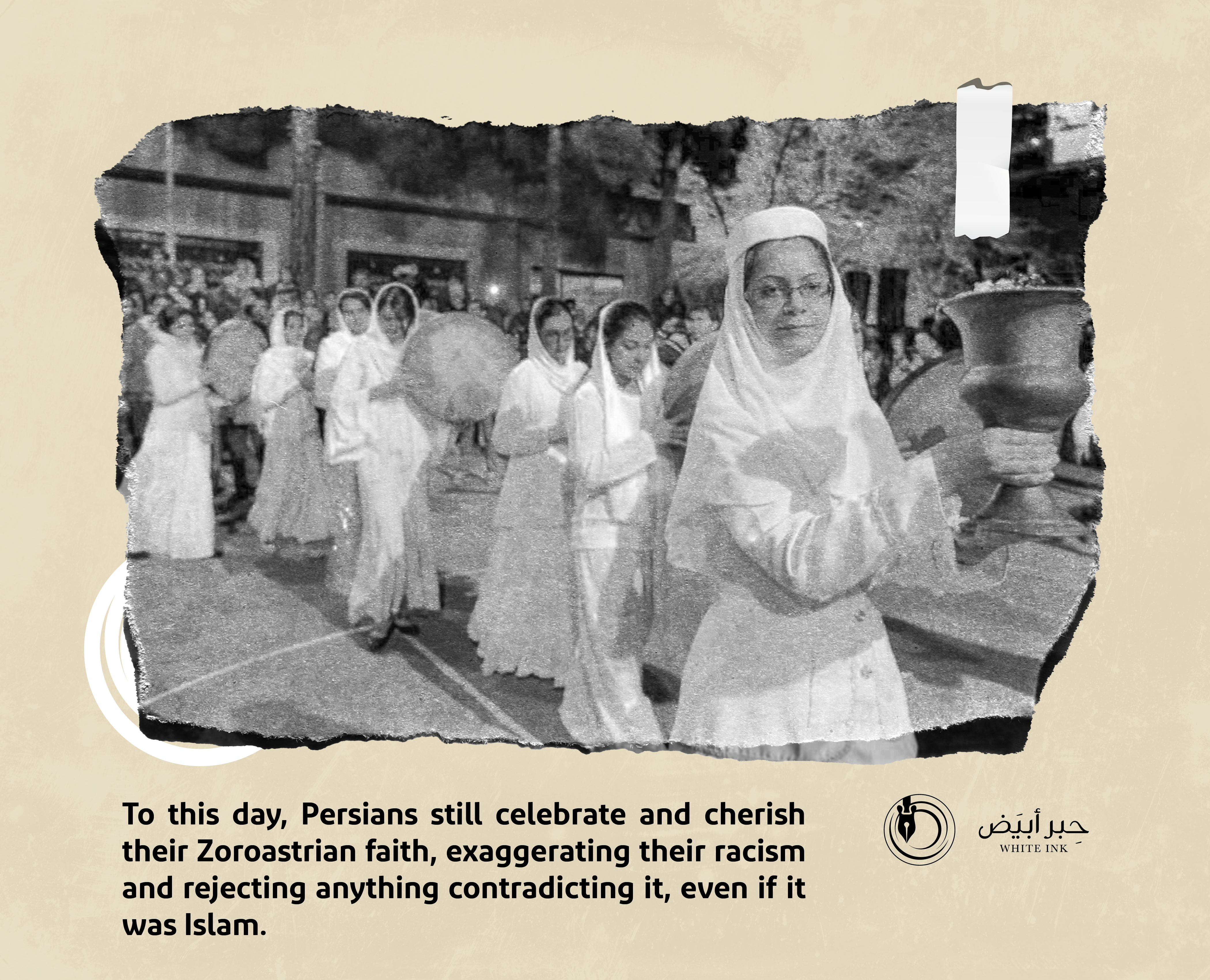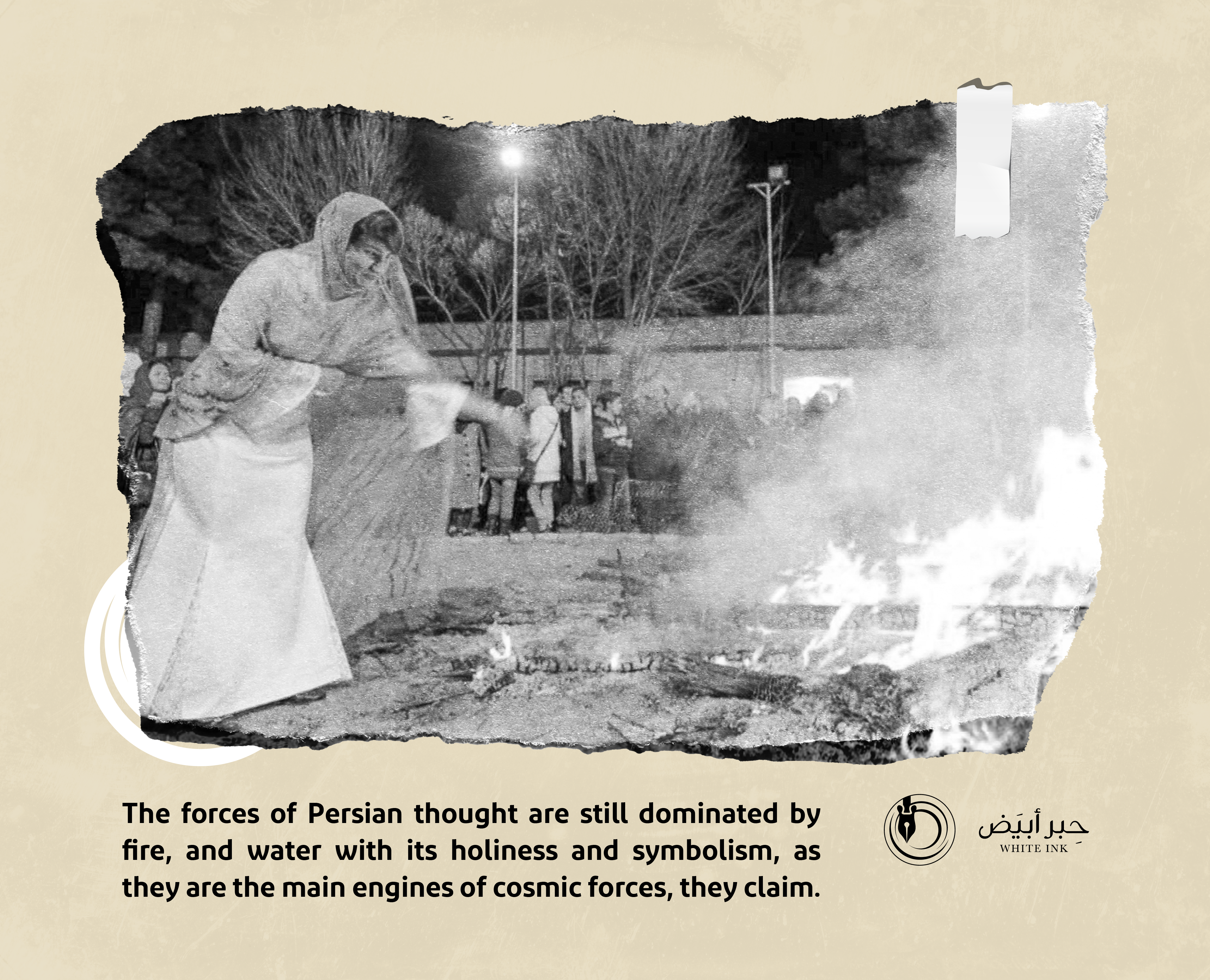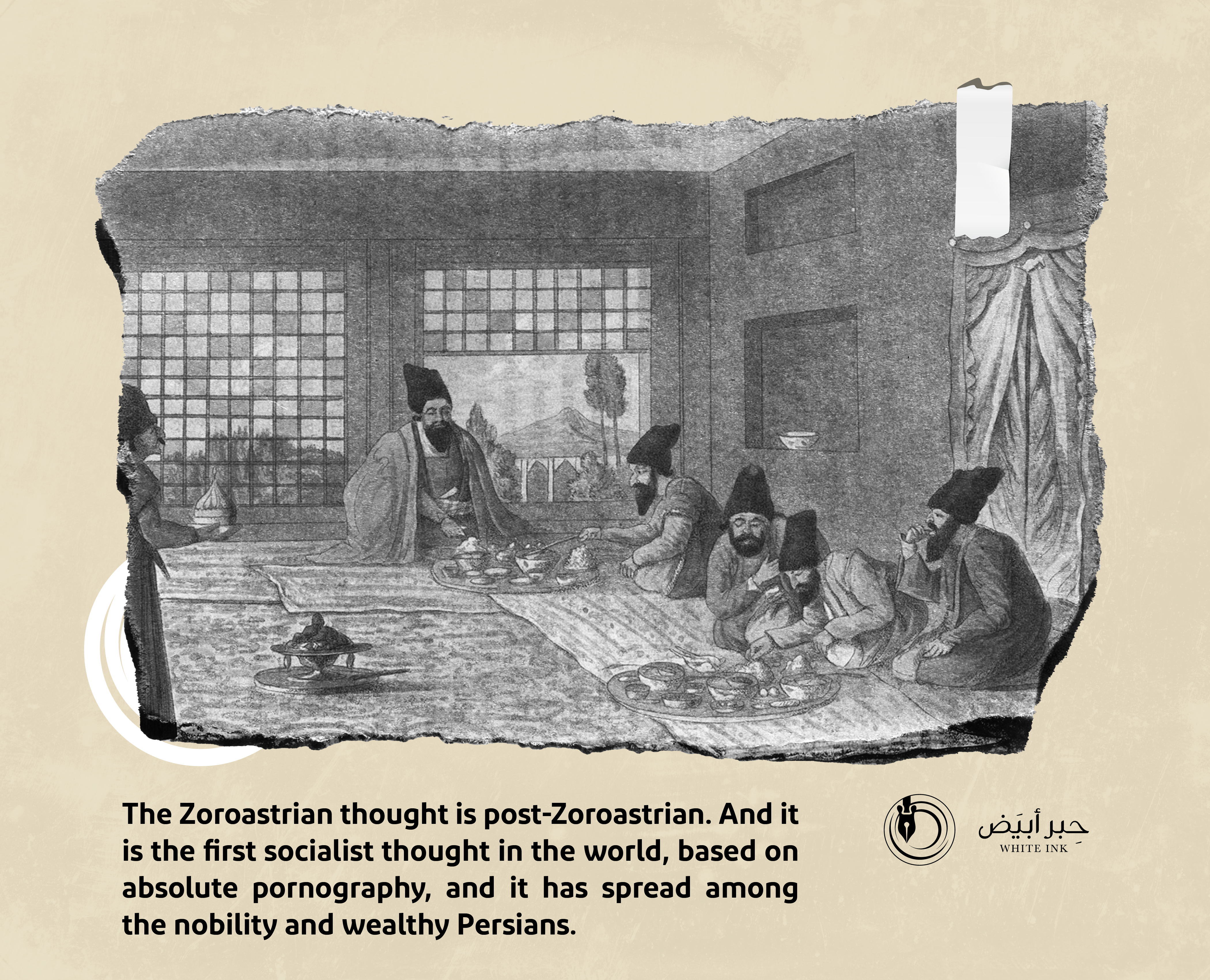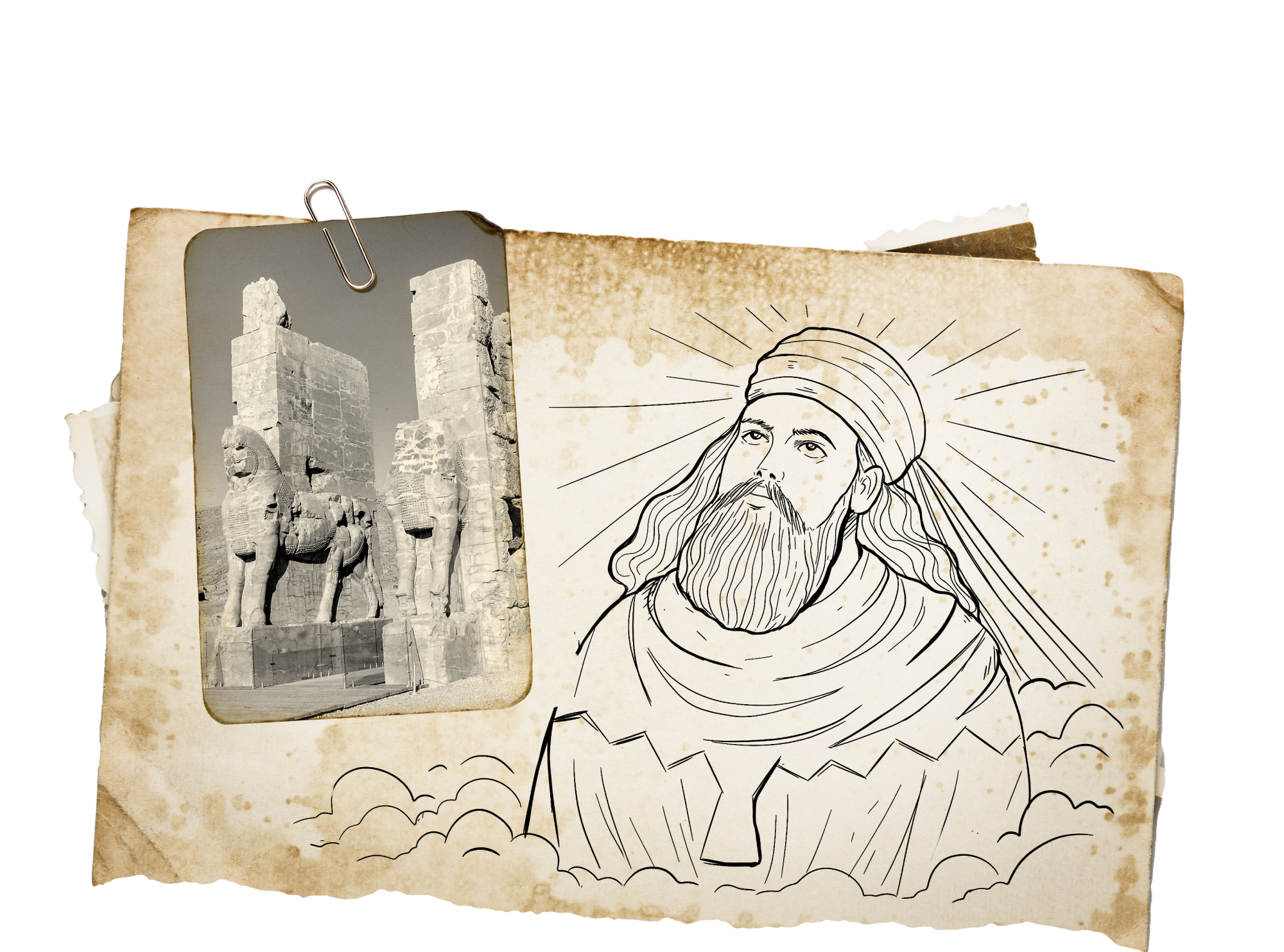
Their racism excluded the Medes and recognized the Achaemenids
Myths of Persian Culture and Their History
The Persians were known in their ancient history as the peoples inhabiting present-day Iran, which is named Persia after them. According to the narratives and manuscripts, their history was mixed with myths in many of its details, especially before they established their state in the ancient history. The Persians are a group of Aryan peoples who speak the language attributed to them, which linguists classify within the Indo-European group of languages.
The first of those myths that shaped the beginnings of the Persians spoke of the Bashdadi dynasty, which claimed that its founder was Kyumars. As usual for the Persians in making superstitions, they linked Kyumars and our master Adam, peace be upon him, as they said that they were one person. This is according to Zoroastrian claims, which are considered a starting point for Persian mythology, considering that Zoroastrianism was the main guide for Persian culture and its components, which still dominate their culture in Iran, and influence their philosophy in religious, life and historical perceptions.
Before entering into the beginnings of Persian history, we must be aware of what the directions of this history are. It was also pointed out that Zoroastrianism is the real guide for Persian perceptions. Although Zoroastrianism as a Persian thought originated in the sixth century BC, it influenced what preceded that date by formulating perceptions and influenced what is beyond it to the present day.
To be more aware of Zoroastrianism, it is the religion embraced by the ancient Persians and attributed to Zoroaster, who most historians believe that he had lived in the sixth century BC. It is noteworthy that its geographical home is in the area known in the past as Medea region, west of present-day Iran. From here, some indicate that the original language of the Holy Persian book “Upasta” was the ancient language of the Medes from which Zoroaster began. Their holy book is also called “Avesta”.
The first start of the Persian-Jewish relationship was during the reign of the Persian-Achaemenid state, the sixth century BC.

As in the Persian myth, which spoke of the founder Kyumars and linked him with Adam, peace be upon him, they linked his wife Elda with Eve. This means that the Persian culture monopolized the origin of humans in their culture and explained it through their myths.
Persian myths say that the Kyumars dynasty continued until the rule reached Jamshid, who is the largest king of this dynasty. After him, the kingdom deteriorated and collapsed, after which the Kayanian kingdom came with its first king “Kayqubad”.
In addition to the fact that all these narratives in the Persian culture are mythological and formulated by the same Zoroastrian religion, they are weak in the face of research and scrutiny and they are illogical as a result of the fact that the Persians have racism of their gender and culture that cancels out the other global cultures. Therefore, whoever investigates these many Persian myths in their very ancient history will find that they intersect with ancient Greek myths as well, especially with the beginnings of humans and the struggle between their gods. This confirms the state of imitation between ancient cultures in their historical interpretations.
As soon as the ancient Persian history ends from dealing with the Kayanian kingdom, it begins with the Medes, who dates say that they came as Indo-European human groups at the end of the eighth century BC. They are the ones who were referred to by the Assyrian monuments as a different and scattered people who migrated from Caspian Sea to Medea, north of the Iranian plateau. They expanded and controlled their surroundings until they were called the Medes.
The Greek historical books talked about the Medes. Perhaps the most famous person who spoke of them is Herodotus. It is noteworthy that the mixed people of the Medes were the ones who destroyed the Assyrian state, but this stage took a long time. The beginning was with the Assyrians attempt to expand at the expense of the Medes, who were living a nomadic life without being politically united until they were united through a period of history under the leadership of Diakos, who made Hamadan his capital. He and his successors after him entered into a rival conflict against the Assyrians until the reign of Hokhshtar, who undermined the kingdom of Assyria after he allied himself with the Babylonian kingdom.
He and his successors after him entered into a rival conflict against the Assyrians until the reign of Hokhshtar, who undermined the kingdom of Assyria after he allied himself with the Babylonian kingdom.
The state of the Medes remained until it ended with the establishment of the Achaemenid state and its king Cyrus the Great in (550 BC), which all Persians consider the actual beginning of Persian history. Here, many specialists wonder why the Persians and their historians neglected the state of the Medes and considered that the real Persian history begins with the Achaemenid state in the middle of the sixth century BC.
There may be a number of reasons, but the closest is that the Persians have historical racism, which makes them ignore the Medes because they are a mixture of races, which are said to have included many nations, including the Kurds. Therefore, the Persians fear that they may consider the Medes as Persians or the beginning of the ancient Persian political history while they know that they were a mixture of immigrant non-Persian races even though they established their kingdom on the land of Persia.
By the way, some historical studies confirm that the Kurds are an extension of the Medes people, and therefore this hypothesis confirms that the Persians did not care about the history of the Medes.
There is also another reason that may be one of the reasons why the Persians did not take care of Medes’ history, which is that the Medes allied themselves with the Babylonians politically and united to undermine the Assyrian state. This made Cyrus consider the Babylonians his enemies. The Persians were not a part of the alliance that existed before that, given that they believed that the Medes were not part of the Persian culture. Cyrus also entered into a war with the Babylonians until he ended their state in (539 BC).
The focus of the Persians on the Achaemenid and Cyrus is due to the fact that he was an expansionist, as he occupied Mesopotamia, Syria and Palestine after overthrowing the Babylonians. He also expanded in eastern Iran until he reached Caspian Sea, where he caused great massacres mentioned in the ancient history. Nevertheless, in the end, he fell dead in his battles in eastern Iran in (530 BC), where it is said that his head was cut off and placed in a basin as a metaphor for the massacres he had committed.
After Cyrus was killed, his son Cambyses, whose expansionist ambitions were like his father, ruled the kingdom. He arrived in Egypt with the help of the Jews. The actual start of the Jewish-Persian alliance was during his reign, especially that Cyrus had previously ended the issue of the Babylonian captivity of the Jews and saved them. Therefore, the relationship between the Jews and the Achaemenids was very good.
The Achaemenid state lasted until (about 330 BC) and ended after it faced the forces of Alexander the Great. During its history it had a tense and racist relationship with many of the peoples around it.


- Hassan Al-Jaf, Encyclopedia of Political History of Iran (Beirut: Arab Encyclopedia House, 2008).
- Shaheen Makarios, History of Iran (Cairo: Al-Muqtaf Press, 1998).
- Badi Bidayati, Cyrus the Great (Tehran: Ansharat Daneshkah, 1335 AH).
- Hassan Pernia, The History of Ancient Iran from the Beginning to the End of the Sassanid Era, translated by: Muhammad Abd Al-Moneim and Muhammad Al-Sibai (Cairo: Anglo Egyptian Bookshop, 1969).
- Ahmed Fakhry, Studies in the History of the Ancient East, 2nd Edition (Cairo: Anglo Egyptian Bookshop, 1963).
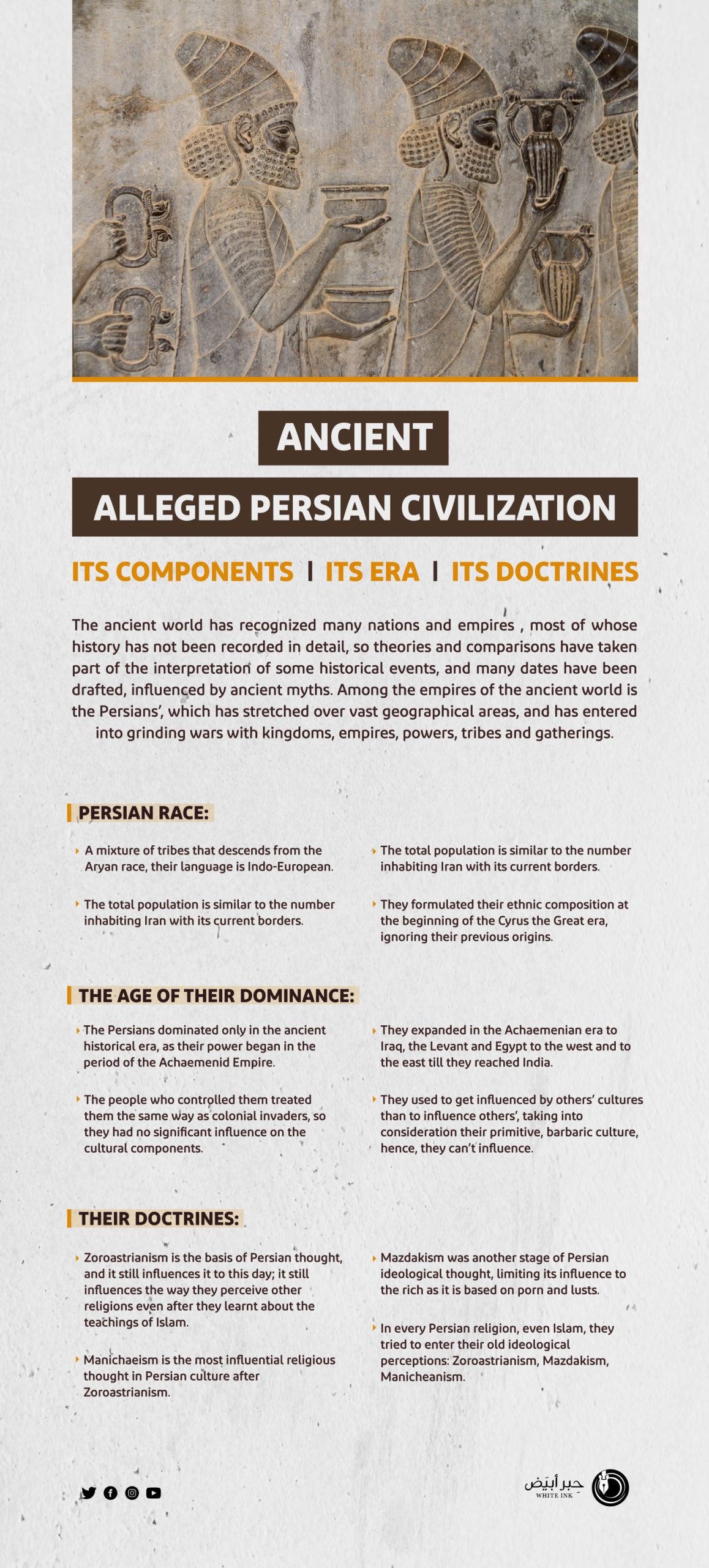
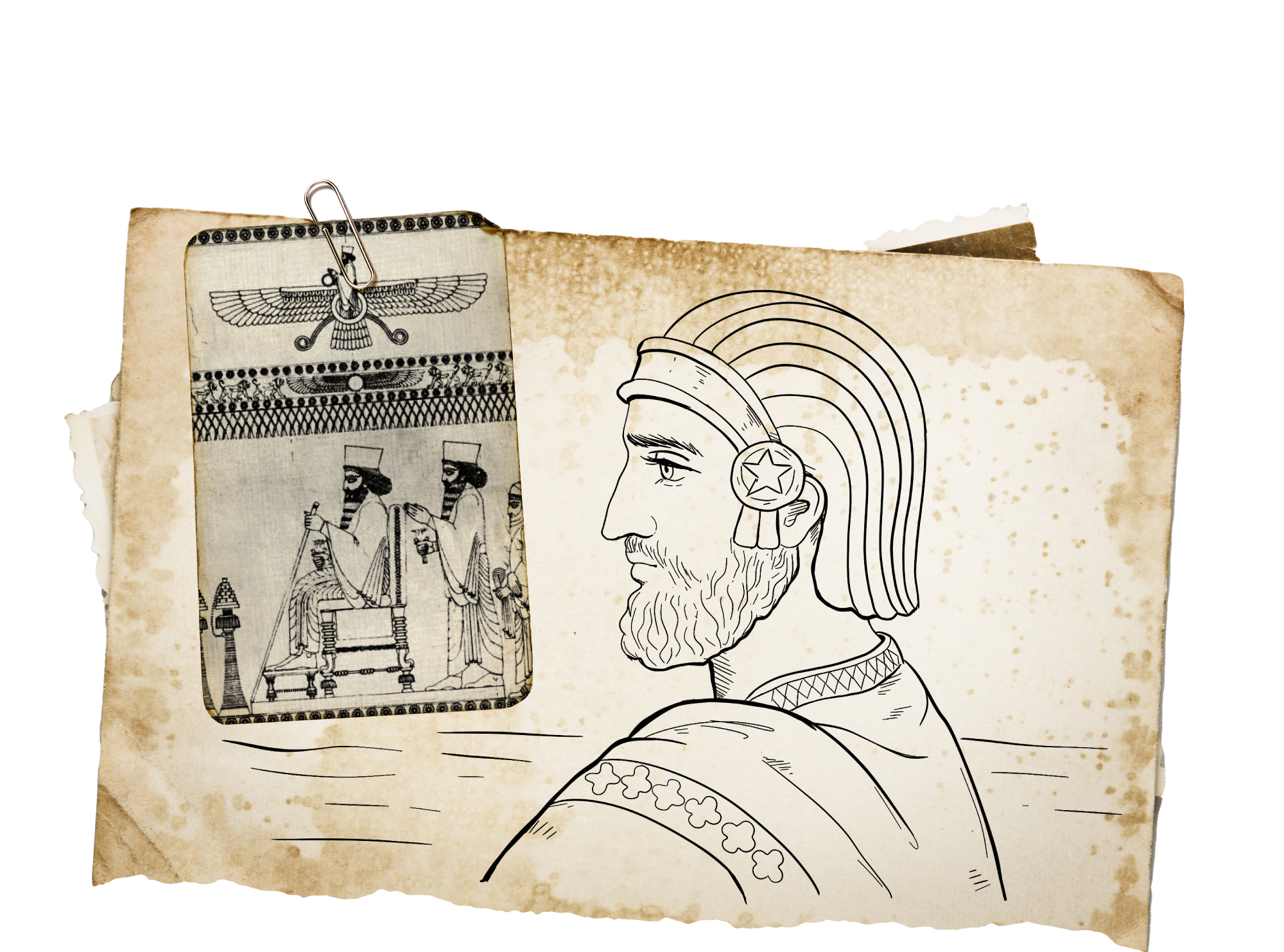
In light of ignoring those who were before him
The Persian culture still believes that “Cyrus” is the father of the Iranians
The Persian Empire is the name given to a series of dynasties centered in modern Iran throughout history and lasted several centuries from the sixth BC to the twentieth AD. The First Persian Empire, founded by Cyrus in about 550 BC, stretched from the Balkan Peninsula in Europe in the west to the Indus Valley in the east.
The dynasty of the Achaemenid Empire promoted by Persian historians had lasted for 200 years before it collapsed by the forces of Alexander the Great. It is the empire that they recognize among themselves as the first Persian empire, considering that what preceded it since the end of the eighth century BC did not achieve the ethnic purity of Persian nationalism that they aspire to, as an affirmation of their racism.
Although the roots of the Persian Empire in its ancient times were the product of a group of semi-nomadic tribes living on sheep, goats and livestock on the Iranian plateau, Cyrus was able through this Bedouin grouping to capture his historical moment and unify them within the Achaemenid family, which was much dispersed before him. Because the Persian historians did not recognize the nation that preceded the Achaemenids, the Kingdom of the Medes was for them a group of invaders, despite its existence before that on the land of Iran. Therefore, Cyrus sought to control “Medea” in order to be able to unify the Iranian country, then moved to extend his absolute control over the capitals of the East, taking advantage of the deteriorating conditions in them and the turmoil of internal conditions in the ancient countries surrounding his country.
The Persians glorified the Achaemenid Empire because it achieved for them a history of colonialism and bloodshed at the expense of other peoples and nations.

As for the Persian religion and belief, its features were shaped in the era of the first Persian Empire by the Zoroastrian religion, where Zoroastrianism is one of the oldest religions in the world and is still practiced today as a minority religion in parts of Iran and India. Zoroaster, who probably lived before 500 BC, attempted to limit worship to a single god rather than a group of gods, according to the Persian culture that preceded him.
It is clear that the Zoroastrian formation was religiously compatible with the establishment of the Achaemenid Empire or during it. Therefore, it is logical to consider that there is a historical plot that was arranged to harmonize the thought and political history of the Persians in a process of harmonization to formulate a special heritage, despite the lack of consistent evidence from historical sources, as many details depend on myths and theories.
The most noticeable thing is that the focus on Cyrus and his Achaemenid kingdom by the Persian element was because it was the kingdom that expanded geographically at the expense of the nations close to it, and then it is natural for this empire to be appreciated and respected by the mother culture of the Persians for its results, while if its circumstances were Other than that, it would not have received so much Persian glorification.
Cyrus gave the Persians an expansive colonial history in his time at the expense of Southwest Asia, most of Central Asia and most of the neighboring regions of the Indian Empire, putting his empire on the map of the ancient world. During his 29-year rule, he fought the greatest states of the ancient classical era, such as the Medes’ state, the Lydian state, and the New Babylonian state. However, his luck did not help him advance towards Egypt when he died in a battle against the Massagetae in Syr Darya River valley in August (530 BC). Cyrus was succeeded by his son Cambyses, who managed to conquer Egypt during his short reign.
In return for the services that Cyrus provided to the Persians, which they consider that he had provided to their culture and history, and despite the bloodshed that he caused and was recorded down in ancient history against many peoples, he remained appreciated by the Persians. Therefore, his name in their culture is always associated with the term “The great”, or “Fizirka” in ancient Persian, and in contemporary Persian “Bozorg”. In confirmation of the symbolism of Cyrus among the Persians, the Iranians still consider him the father of Iran.
Therefore, all Persian sources consider the killing of Cyrus a major event of his time. This is confirmed by what Selim Hassan said in “Encyclopedia of Ancient Egypt and a Glimpse into the History of the Greeks” about the Egyptian Renaissance, where he explains what happened to the Kingdom of Cyrus after his death:
After Cyrus’ death, his son ruled for a few years. After that, a great king called “Dara I” took power, whose empire at that time included Egypt and extended east across the borders of India. In fact, King Dara (521–486 BC) linked the outskirts of his empire to a network of roads that led to Sus, the capital of his kingdom. From the city of Sardis, the seat of his camp in the west of his possessions, there was a 1500-mile road guarded at the mountain passes and at the mouths of rivers by Persian soldiers. Tourism between the two cities used to take three months, but urgent messages were transported to and from Sus in a week.
The murder of Cyrus was a major event in the course of the Persian Empire. Although his son made an attempt to unite the country and the nation, the turmoil began to reach the rule until Emperor Darius came. He was also called Darius the Great. The Arabs call him Dara I, and the Greeks call him Darius I. He lived between the years (549-486 BC) and ruled during (521-486 BC).
Revolutions broke out throughout the empire after Cambyses’ death, and Darius had to subdue them one by one. In Babylon, one of the leaders announced the revolution and declared himself king in the name of Nebuchadnezzar III, so Darius headed an army to Babylon. The army faced great difficulties in crossing the Tigris River due to the strength of the Babylonian fleet, but Darius made a surprise attack, so he crossed the river and defeated the Babylonians who sought refuge inside their city. Darius knew that taking control of Babylon was an effective solution to put an end to all other revolts, so he focused his attention on subjugating the city that surrendered in (521 BC). After that, Darius attacked Medea, defeated its army, captured its king, and executed him by hanging in Hamadan. He also entrusted some of his leaders to end the revolution of Parthia (Khorasan) and Karakan, and this was done.
Darius’ armies were able to put down a revolution in Egypt in (519 BC) and occupy Thrace in southeastern Europe in (513 BC), and years later the Persian forces occupied what is now called southern Pakistan. Darius ruled his empire by dividing it into major provinces. Among the actions of the officials chosen by Darius to administer these provinces was to increase local taxes to supply the royal treasury and to supply Darius with soldiers.
In this way, Darius put down all the revolutions and was able to reunite his empire. Darius recorded his victories in detail in the famous “Behistun inscription”, which was written in three languages, including Old Persian and Babylonian. Darius, who was a young twenty-year-old, ruled for a long time, which began by recording the history of his country on a huge column. Among his achievements were the reorganization of the empire, such as building and paving roads to facilitate postal correspondence, receiving news from his spies quickly, in addition to the administrative division of his provinces, which amounted to twenty. He annexed the Ionian settlements to the state of Lydia in Asia Minor. He also allowed the Jews to complete the construction of the Temple again in (515 BC).
The close relationship of the Jews with the Persians is explained by the fact that Cyrus liberated them from the Babylonian captivity after he had overthrown the Babylonian kingdom. Therefore, the Jews are still first-class allies of the Persians, regardless of the political disguise.


- Badi Bidayati, Cyrus the Great (Tehran: Ansharat Daneshkah, 1335 AH).
- Hassan Al-Jaf, Encyclopedia of Political History of Iran (Beirut: Arab Encyclopedia House, 2008).
- Selim Hassan, Encyclopedia of Ancient Egypt and a Glimpse into the History of the Greeks (Cairo: Hendawy Foundation, 2012).
- Shaheen Makarios, History of Iran (Cairo: Al-Muqtaf Press, 1998).
- Mahmoud Shabib, The Conquest of Persia (Beirut: Dar Al-Fath).
- Nourhan Nasir, Ancient Persia and the Persian Empire (Almrsal website, 2021).
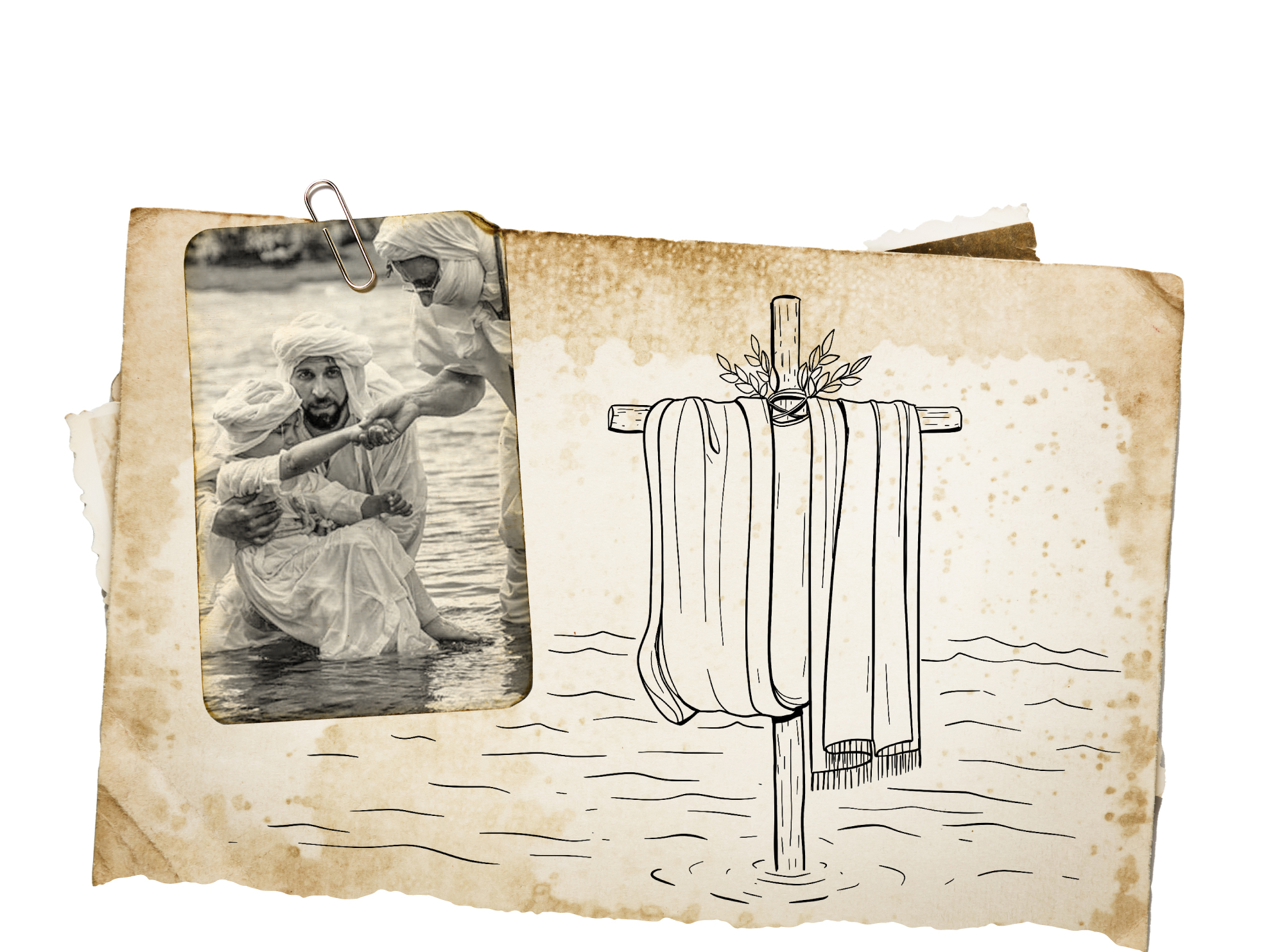
The esoteric doctrines of Islam were mixed with this ideology
The religious ideology of the Persians is the source of sedition, conflicts and assassinations throughout history
We can’t understand the behavioral structure that reflects the ethnic superiority of the Persian without referring to the first indications of the formation of Persian society. It is the introduction that is considered an epistemological necessity to monitor what has accumulated and made the Persian race adopt racist and confrontational behavior with anything that relates to Arabs, especially after they were able to control the political decision in Iran.
In this context, we must start from a basic axiom that Iran’s hostility to Arab and Sunni countries is not “originally” linked to the religious and ideological sides. Otherwise, how can we explain Iran’s aggressive hostility to the people of Ahvaz, who are, for the most part, Jafari Imamate Shiites? Nor can their hostility to the Kurdish Muslims, who are Sunnis, be explained in terms of sectarianism.
The center of the problem is to subject the Persian ethnic system to racial and ideological research and analysis, as an introduction to understanding the nature of the aggressive hostility to Arabs, as they are a race that embraces the mission of the religion and a language that unites the word of Muslims. This is what the Persians see as an unacceptable monopoly on the mission of the Seal of the Prophets and Messengers, even if they claim that they rely on the religion’s principles and on the guidance of the faithful Messenger.
Historical evidence concludes that Iran is the old name for the region, given that the name Persia given to present-day Iran is like giving a special name to all regions, as Persia is nothing but the southwestern region of Iran, and this name was given to all Iranian land.
From this point of view, the origins of the Persians go back to the Indo-Aryan peoples who migrated from Central Asia to the Iranian plateau in the second millennium BC. Persia was part of the Sumerian and Akkadian empire. The geographical reference area of the Persians in central Iran can be limited to Ahvas, south of Isfahan. There they were subjected to a group of empires and mamluks, before they were able to establish powerful states such as the Achaemenid Empire, and then the Sassanid state, which holds the same status as the second Persian Empire.
At the ideological level, a group of “religions” spread in the Persia region, perhaps the most important of them; Zoroastrianism, Mazdakism, Yarsanism and Mandaeanism. These religions have spread varyingly, but Zoroastrianism, in particular, has spread widely, and even inspired a group of philosophers, especially Friedrich Nietzsche, who wrote an important book titled “Thus Spoke Zarathustra.”
As for the origins of their religious ideologies, the history of the Persians spanned centuries BC, founding ancient civilizations, which made them exaggerate in glorifying their history and civilization, and fanatic about their race. That is what made them consider their first king Kyomart as a son of Adam because he is the origin of all humanity, and in another ideology, they consider him Adam, peace be upon him, himself.
The rich and the affluent resorted Mazdakism; because it allows immoral and sinful acts and takes human values lightly.

Persian religious ideology began with primary rituals from an early period in Persian ideology, which believed in the sanctification of the clergy class, which then was raised, as per Persian class, to the first rank ahead of the politicians, military, administration and common people class in Persian society. The Persian clergy class relied on religious dogmatism that made society in all its layers subservient and subordinate manipulating its emotions, conditions and interests. As confirmed by history and historians, the sources of esoteric and exaggerated Sufi ideologies go back to Persian origins.
The Persians, with their various ancient and modern beliefs, from their paganism to their Islam, took a single approach based on the fact that they agreed to sanctify the clergy and priestly ideology, as they are considered mediators between people and legislation, whatever its philosophy and origins. Because of the importance of this religious class and its people in Persian ideology; It branched out, as did similar religious ideologies that believed in the religious guardianship of humans, so they had branches in the clergy class, consistent in one way or another alongside rulers, worshipers, ascetics, guardians and teachers.
The Persians committed to their religious ideology in a private manner, claiming it as an ethnic innovation of their own, even when they converted to Islam, they tainted it with their ancient ideologies, until their methods were known as esoteric, which is always stripped from the purity of Islam with its secrets, sanctities, lies and myths.
To understand the deep connections in the religious ideology of the Persians, we must shed light on their ancient religions, as the religion of Mazda the Wise is considered the oldest, and their ancient people believed that Mazda was the god of stable and civilized tribes, and that he was the god of the whole world. The ancient Persians believed that Mazda is the supreme god who sent the prophets and the absolute god and creator, and considered their kings Kimarth and Zoroaster as his prophets. They said that he created angels around him, the most powerful of them Bahman, which is the common Persian name and has been used by some Persian families to this day.
Throughout the stages of the ancient religious ideology of the Persians, we find that they worshiped the forces of nature, so their prayers were directed towards the sun, moon and water, in addition to fire in particular, as they do not extinguish it in their homes and are keen not to hide its flames. This ideology was shortened to the Zodiac and its branches.
In the later stages of ancient Persian history, they were influenced by Judaism, Christianity and Buddhism, since the Jews settled in the land of the Persians after the Babylonian captivity. After several centuries, the Persians found themselves practicing secrecy and piety, influenced by the Jews, in contrast to the spread of Christians among them until the people revolted against Christianity in Persia in the year (339 AD).
By tracing the origin of ancient Persian religious ideology, we note that it was based on the sanctification of the clergy since ancient times, and the clergy control over Persian society was clear, and their principles and the origins of their ideology were secret and pious.
The Persian religious ideology was famous for provoking sedition, disputes and assassinations in order to liquidate their opponents, in addition to their false religious struggles. This is what prompts us to link between what happened at the beginning of their entry to Islam, their esotericism, and the origins of their ancient belief, which was reflected in their Islam tainted by sedition, bloodshed and myths.
Zoroastrianism:
From the womb of Mazda, Zoroastrianism was given birth, as Zoroaster is considered by the Persians a prophet sent from Mazda, and the philosophy of Zoroastrianism is summarized as the difference between light and darkness that represent good and evil, and they believe that they are the principle of the existence of the world, considering that everything was created and happened as a result of these two opposites. According to Zoroastrianism, Mazda represents the Creator, light and goodness, and Satan represents darkness and evil, and one of the various ideologies is that water is sacred representing good, so we find Zoroastrians revering it by not washing their faces with water, as they limit themselves to drinking it and irrigating their crops.
This religion is based on a set of myths that surround the character of “Zoroaster”, which makes the researcher focus on the most important beliefs that Zoroastrianism established, away from the origin of the belief, which a group of researchers dealt with in great detail.
According to Persian ideology, Mazda and Zoroaster are linked by wisdom. Zoroaster took on a more humanly concept in their ideology, as they say that he was born in Azerbaijan from a Persian mother, and they believe that Mazda created the spirit of Zoroaster and placed it in a tree surrounded by close angels, and planted it in the mountains of Azerbaijan.
By connecting what is found in the ancient, modern and contemporary Persian culture, we find that Azerbaijan represents for the Persians a source for the clergy class, as it keeps bringing in some men of its clergy class from the Turkish Azari race, as is the case with the current Iranian Supreme Leader Ali Khamenei.
The Persians are proud of their ancient beliefs even after their Islam, which they tainted with their ancient ideologies. Therefore, the traces of Zoroaster in Persian culture, such as the book Zend-Avesta or the so-called Avesta, are an important source, dividing the world into two parts: Mina and Keti, the soul and the body, simulating theology and humanity in other religious cultures.
Concerning the “Book” that this Persian religion brought, we quote Will Durant regrading it: “It is in fact a collection of books that absorbed the sayings and prayers collected by the disciples of Zoroaster, and some of his later followers called it Avesta. Some investigating scholars mixed up the naming, so they mistakenly called it “Zend-Avesta”, and thus became known to the Westerners by this misnomer.
Zoroaster believed that God was one and called him “the Wise God.” He considered fire, water, earth and air to be pure elements and that fire represented God’s light or wisdom. Zoroastrians prayed several times a day and practiced communal worship in the fire temple. Unlike Christianity, fasting and celibacy are forbidden to them except for a small part of the purification rites.
Manichaeism:
Manichaeism is attributed to Mani, born in the year (215 AD), who appeared in the time of Shapur Ardashir, and was killed by Bahram, son of Hormuz, son of Shapur in the year (279 AD); Because he went against Bahram’s aggressive expansionist policy. Mani was not like the legendary Mazda nor the Azeri Zoroaster. Mani was born from a Persian mother and father from the Ashkan royal family, and his father, Pātik the Wise. Mani introduced the idea of reincarnation into Persian religious ideology, drawing on Buddhism and Indian culture.
Mani was in harmony with Zoroaster in the philosophy of light and darkness, and he also drew on the Christian doctrine of the Trinity, when he said: God is composed of three: The Great First, the Ancient Man, and the mother of Life. Therefore, Mani believed in Zoroaster and the prophecy of Jesus, son of Mary, peace be upon him, and Mani considered himself the last of the prophets informed of God.
Mani established a new stage in Persian religious ideology, when he came up with a book that he claimed holy called Bistah, so the Persians saw that he and his followers are heretics, because Mani made a contradictory interpretation of Bastah in the name of Zend, and he interpreted the Zend as Ba-Zend, so the word heretic or “Zindiq” is based on the Persian culture that relates to the followers of the Zend for their extreme contradiction and mental and intellectual deviation.
Manichaeism clashed with Zoroastrianism, and this made the Persian authority to persecute the Manichaeans, who considered their alleged prophet Mani a martyr when he was killed by Bahram.
Mazdakism:
In the year (487 AD) Mazdak, son of Bāmdād appeared, and he called his ideology Mazdakism. He was calling for permissiveness and the rumored ideology that intersects with communism in its initial meanings. This caused a crisis in his teachings, as the man does not know his son, nor the father knows his son, and people were not able to own what was in their possession.
Mazdakism transitioned from being a religious ideology for the Persians to a social ideology, which established the revolutionary laws that destroy societies. The Persian social organization would have almost collapsed, had it not been for the assumption of power by Khosrau I Anusharwan, son of Qubad, who returned the people’s property. However, some principles of Mazdakism are still applied in advanced religious frameworks among the Persians.
The Mazdakians resorted to secrecy in their beliefs, and their role diminished, especially in the era of the Sassanid state, and it did not return and become active again until after the Islamic conquests in Persia, when the Mazdakians revolted and sought to strife among the people and attack the free people.
Mazdakism is one of the ancient Persian permissive religions that spread on a small scale, especially among the young, the rich and the affluent, and is based on spreading obscenity, permissiveness and denial of human values. Mazdakism is closer to a behavioral heresy than to a “religion” in the theological sense, as it is based on incitement, anarchy, sanctification of the sexual instinct, and defense of socialism in terms of money, women and honor.
As is the custom of Persian culture in mixing religions up, Mazdakism was mixed with Zoroastrianism and formed an intersection between the two ideas and religions, were it not for the fact that Mazdakism was more permissive.
Yarsanism:
Yarsanism is one of the religions spread among the Kurds of western Iran and northeastern Iraq. This esoteric religion emerged in the 12th century AD at the hands of Sultan Ishaq Barzanjî, nicknamed “The Pride of Love.” Some associate it with the ancient Yazadism and consider it a branch religion. It seems that the piety that distinguished the followers of the “Tariqa” (Method) made it difficult to enumerate and distinguish them despite the intersections with the Shiite doctrine in the veneration of Ali bin Abi Talib, may God honor him, as well as the Sufi extension of the Yarsanis.
Mandaenism:
Its followers consider it one of the oldest religions and they are called Sabeans and Mandaeans. The followers claim that their prophets are the prophets of Allah, who are Adam, Seth, Idris, Noah, Sam son of Noah and Yahya son of Zakaria.
Although the Iranian constitution does not recognize this religion, its followers are spread in Ahvaz (western Iran) on the Iraqi border in the city of Ahvas, along the Karun River. According to some references, the number of Sabean-Mandaeans is about 25,000 people who demand the right to constitutional recognition, which is what the Iranian authorities promised by working to add a paragraph in the constitution listing their religion among the recognized religions.


- Hassan Al-Jaf, Encyclopedia of Political History of Iran (Beirut: Arab House of Encyclopedias, 2008).
- Khaled Al-Qat, “The Esoteric Interpretation and its Impact on the Beliefs of the Esoteric Schools,” Taibah University Journal of Arts and Humanities, second year, p. 4 (1435 AH).
- Khazal Al-Majidi, The Science of Religions (Rabat: Mominoun Without Borders, 2016).
- Shaheen Makarios, History of Iran (Cairo: Al-Muqtaf Press, 1998).
- Mircea Eliade, History of Religious Beliefs and Ideas, translated by: Abdel Hadi Abbas (Damascus: Dar Dimashq, 1987).
- Will Durant, History of Civilization, translated by: Ibrahim Al-Shawarbi (Cairo: Al-Khanji Library, 1947).


